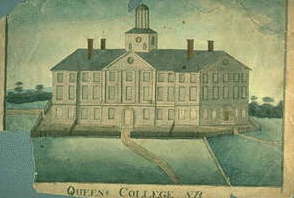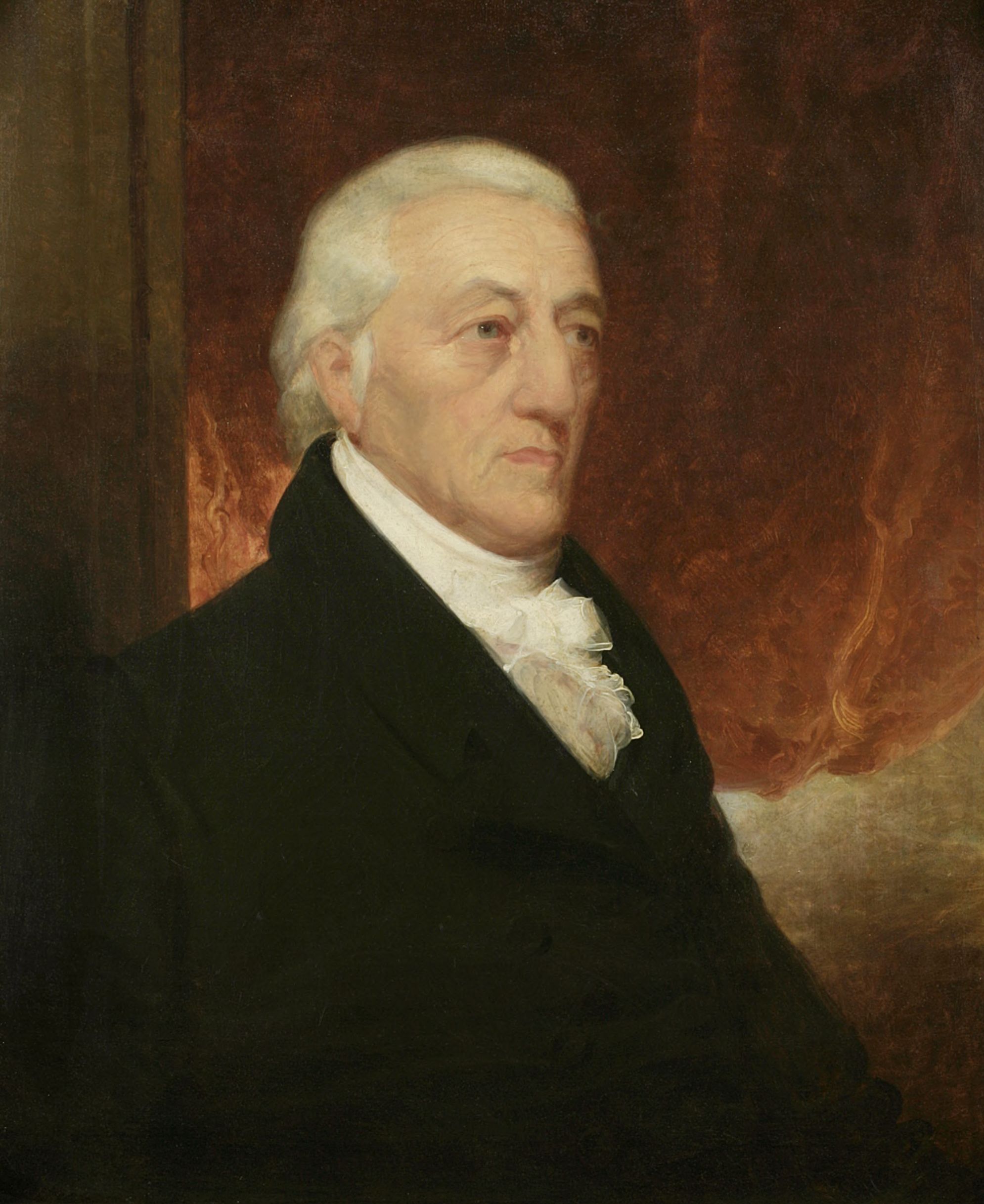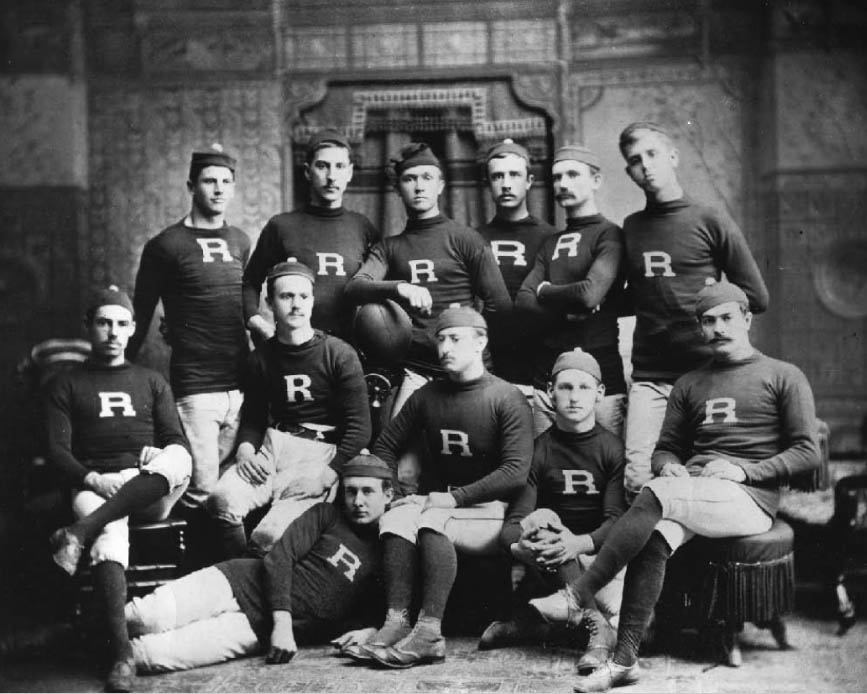Rutgers University
This article appears to contradict another article. |
Template:Infobox American UniversitiesRutgers the State University of New Jersey is located in New Brunswick, Piscataway, Camden and Newark, New Jersey. Considered a highly prestigious university, Rutgers offers more than 100 distinct bachelor's, 100 master's, and 80 doctoral and professional degree programs across 29 degree-granting schools and colleges, 16 of which offer graduate programs of study.
Rutgers is the eighth oldest institution of higher learning established in the United States, founded in New Brunswick, New Jersey as "Queens College" in 1766. It was renamed "Rutgers College" in 1825. The name was officially changed to "Rutgers University" in 1924. While originally an institution affiliated with the Dutch Reformed Church, the university is now non-sectarian and makes no religious demands on its students.
Rutgers was designated the State University of New Jersey by legislatives acts in 1945 and 1956. The University of Newark merged with Rutgers in 1946, expanding the school to include the current campus in Newark. The College of South Jersey, which became the Camden campus, merged in 1950.
Rutgers University as an Institution
Rutgers, The State University of New Jersey, is one of the leading universities in the nation and is unique in being the only university in the nation to be a colonial chartered college (1766), a land-grant institution (1864), and a state university (1945/1956).
The university is made up of 29 degree-granting divisions; 12 undergraduate colleges, 11 graduate schools, and three schools offering both undergraduate and graduate degrees. Five are located in Camden, seven in Newark, and 14 in New Brunswick/Piscataway.
Chartered in 1766 as Queen's College, the eighth institution of higher learning to be founded in the colonies, the school opened its doors in New Brunswick in 1771 with a lone instructor, a single sophomore, and a handful of first-year students. During its early years, the college developed as a classic liberal arts institution.
Rutgers College became the land-grant college of New Jersey in 1864, resulting in the establishment of the Rutgers Scientific School, featuring departments of agriculture, engineering, and chemistry. Further expansion in the sciences came with the founding of the New Jersey Agricultural Experiment Station in 1880, the College of Engineering (now the School of Engineering) in 1914, and the College of Agriculture (now Cook College) in 1921. The precursors to several other Rutgers divisions were also established during this period: the College of Pharmacy (now the Ernest Mario School of Pharmacy) in 1892, the New Jersey College for Women (now Douglass College) in 1918, and the School of Education in 1924.
The first Summer Session began in 1913 with one six-week session. That summer program offered 47 courses and had an enrollment of 314 students. Currently, Summer Session offers over 1,000 courses to more than 15,000 students on the Camden, Newark, and New Brunswick/Piscataway campuses, off-campus, and abroad.
Since the 1950's, Rutgers has continued to expand, especially in the area of graduate education. The Graduate School—New Brunswick, Graduate School—Newark, and Graduate School—Camden each serve their respective campuses. In addition, professional schools have been established in such areas as management, social work, criminal justice, applied and professional psychology, the fine arts, and communication, information and library studies. (A number of these schools offer undergraduate programs as well.) Also at the undergraduate level, Livingston College was founded in 1969, emphasizing the urban environment.
Rutgers, The State University of New Jersey, is accredited by the Commission on Higher Education of the Middle States Association of Colleges and Schools (since 1921). In 1989, Rutgers University became a member of the Association of American Universities, an organization comprised of the 62 leading research universities in North America.
Richard Levis McCormick (b. 1947) is the current president of Rutgers University.
Rutgers: Rich in History and Tradition

Rutgers, The State University of New Jersey, was chartered on November 10, 1766 as "Queens College," in honor of King George III's Queen-consort, Charlotte of Mecklenburg-Strelitz (1744-1818). The charter was signed and the young college supported by William Franklin (1730-1813), the last Royal Governor of New Jersey and illegitimate son of Benjamin Franklin (1706-1790). The original purpose of Queens College was the education of future ministers of the Dutch Reformed Church. (Ironically, given the tenets of Christianity, the college first met at a tavern called the Sign of the Red Lion, on what is today the grounds of the Johnson & Johnson corporate headquarters in New Brunswick, New Jersey.) It admitted its first students in 1771 and granted its first degree in 1774, to Matthew Leydt. When the American Revolution broke out, the college abandoned the tavern and held classes in private houses, in and near New Brunswick.
In its early years, Queens College was plagued by a lack of funds. In 1793, with the fledgling college falling on hard times, the board of trustees voted on a resoluton to merge with the College of New Jersey (now Princeton University). The measure failed by one vote. The problem did not go away, and in 1795, lacking both funds and tutors, the trustees consider moving the college to New York. Instead, they decide to close, only to reopen in 1808. The next year, the college got a building of its own, which is now called "Old Queens" (and which still stands), however, continued financial woes would cause the building to wait 14 years for completion, and Queens College closed down a second time, in 1812.

In 1825, Queen's College was reopened, and its name was changed to "Rutgers College" in honor of American Revolutionary War hero Colonel Henry Rutgers (1745-1830). According to the Board of Trustees, Colonel Rutgers was honored because he epitomized Christian values, however, it probably helped that the Colonel gave a gift that set the college on secure financial footing. Rutgers, a descendant of an old Dutch family that settled in New Amsterdam (now New York City), gave the fledgling college a $5000 bond and a bell to be placed in the cupola of Old Queens. The college's early troubles inspired numerous student songs, including an adaptation of the drinking song Down Among the Dead Men with the lyrics "Here's a drink to old Rutgers, loyal men, May she ne'er go down but to rise again."
"Rutgers College" became "Rutgers University" in 1924.
Rutgers was one of the early institutions to engage in intercollegiate athletics, in a small circle of schools including Yale University, Columbia University and long-time rival, Princeton University.
On May 2, 1866, in the first intercollegiate athletic event in Rutgers history, the Rutgers baseball team was humiliated by the Princeton team, 40-2.

On November 6, 1869, Rutgers became the "Birthplace of College Football" when it defeated Princeton, six "runs" to four, in the first intercollegiate football (or soccer) game ever played (the site, then a field, is now occupied by the College Avenue Gymnasium, along with the parking lot behind it). Evidence of the game being close to soccer More evidence that the rules of this game were closer to soccer than American football Instead of wearing uniforms, the players stripped off their hats, coats, and vests and bound their suspenders around the waistbands of their trousers. For headgear, the Rutgers team wound their scarlet scarves into turbans atop their heads. The rules, more resembling those of English rugby (or even soccer) than what developed into American football, included limiting each team to 25 men on the field at once and banning throwing or running with the ball. Rutgers got Columbia University started in the grid sport the following season and in a few years most of the East's colleges and universities were represented on the gridiron.
However, our legacy in college football seems to have begun there... Rutgers proceeded to lose to Princeton each year for the next 68 years, only breaking that losing streak in 1938.
Its alma mater, or anthem, is On the Banks of the Old Raritan, written by Howard Fullerton (Class of 1872), and it features the line "For has she not stood / Since the time of the Flood / On the banks of the old Raritan". Fullerton, a member of the Order of the Bull's Blood, was alleged to have inspired the theft of a cannon from the campus of Princeton University in 1875, an event—and the ensuing debate between the two university presidents—reported in nationwide newspapers, and led to an unsuccessful repeat of the crime in 1946.
To this day, intrepid Rutgers students journey the 16 miles to Princeton University to place their declaration of ownership of the cannon by painting the cannon scarlet red. Unfortunately, like the students who stole the cannon in 1875, they usually paint the wrong cannon, as there are two behind Nassau Hall at Princeton. Today, a cannon is placed in the ground memorializing both this event, and a few alumni in the service who were killed in action. At Commencement, tradition leads undergraduates to break clay pipes over the cannon, symbolizing the breaking of ties with the college, and leaving behind the good times of one's undergraduate years. This symbolism dates back to when pipe-smoking was fashionable among undergraduates, and many college memories were derived from evenings of pipe smoking and revelry with friends.
The Raritan River, to which the song alludes, flows between the New Brunswick and Piscataway portions of the New Brunswick/Piscataway campus. The Raritan last had a major flood in 1999, during Hurricane Floyd, closing the campus for two days due to the blockage of bridges over the river.
Cap and Skull is a famous Rutgers society that admits less than one-half of one percent of seniors. It is modeled after the Skull and Bones society at Yale.
In addition to being the "birthplace of college football," Rutgers has given birth to discoveries and innovations such as Cheez-Whiz, water-soluble sustained release polymers, Tetraploids, robotic hands, and artificial bovine insemination.
Student Organizations
Coming soon!
Notable alumni
- Rob Andrews
- Joseph P. Bradley
- Kristin Davis
- Calista Flockhart
- Louis Freeh
- Milton Friedman
- James Gandolfini
- Garret A. Hobart, Vice President of the United States
- Paul Robeson
- David Stern
- Robert Torricelli
- Selman Waksman, Nobel laureate
Notable faculty
- Stephen Bronner
- Avery Brooks
- Vašek Chvátal
- James J. Florio
- Jerry Fodor
- Israel Gelfand
- Ruth Bader Ginsburg
- Lila Gleitman
- Alvin Goldman
- Leon Golub
- Mason Gross
- Andras Hajnal
- Henryk Iwaniec
- Jeffry Kahn
- Leonid Khachiyan
- Ernest Lepore
- Alan Leslie
- Roy Lichtenstein
- Colin McGinn
- Alan Prince
- Zenon Pylyshyn
- Michael Saks
- Stephen Stich
- Mario Szegedy
- Endre Szemeredi
- Lionel Tiger
- Jay Tischfield
- Robert Trivers
- Wise Young
